Personalised Training in Driving
Research Summary
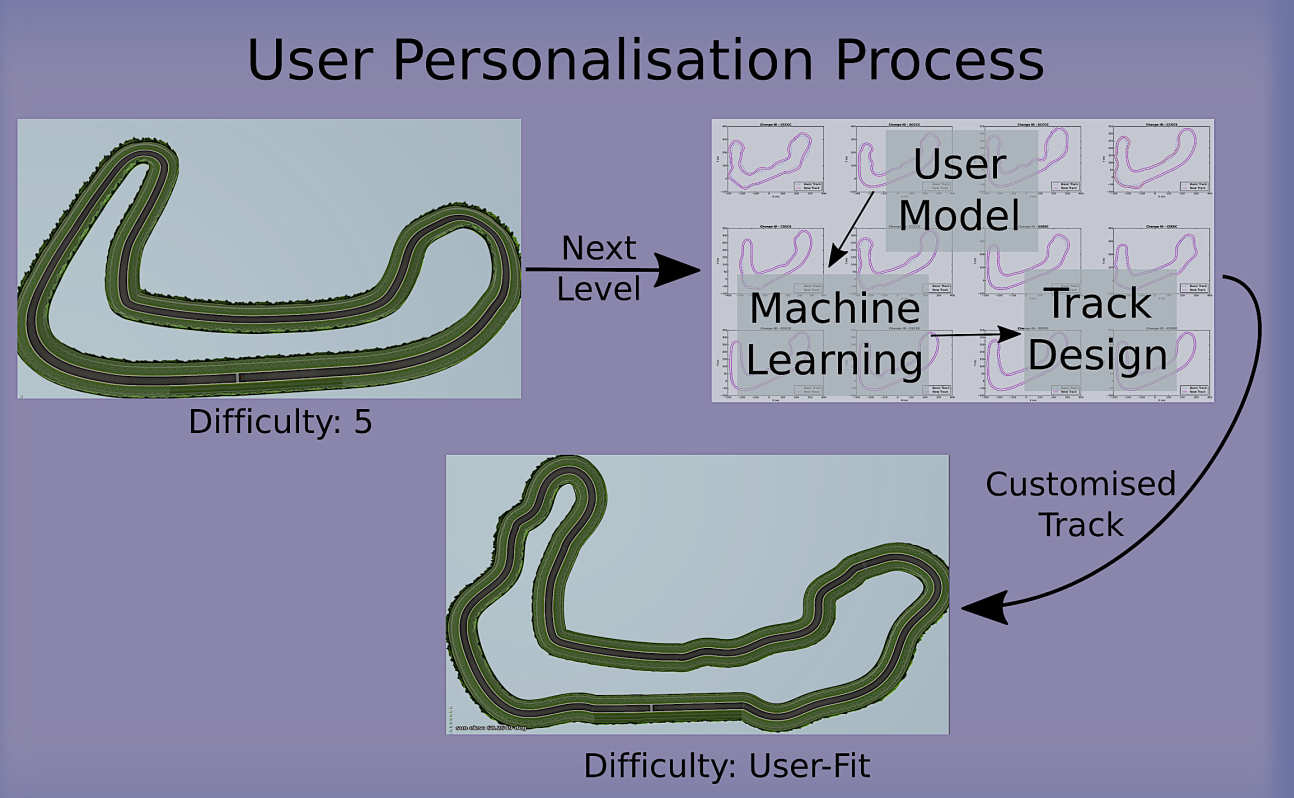 The research aims to investigate the driver’s behaviour in a simulated driving environment, so as to provide an improved and more personalised assistance/training to each user of the system. The area of this particular research, is focused on high performance driving through car simulators and the understanding of the underlying actions of the user while (s)he is driving. By accurately understanding the user we can then provide personalised training – by changing the simulator’s environment – and assistance, according to the skills of the user.
The research aims to investigate the driver’s behaviour in a simulated driving environment, so as to provide an improved and more personalised assistance/training to each user of the system. The area of this particular research, is focused on high performance driving through car simulators and the understanding of the underlying actions of the user while (s)he is driving. By accurately understanding the user we can then provide personalised training – by changing the simulator’s environment – and assistance, according to the skills of the user.
We combine both behavioural and physiological data into our models that are responsible for abstracting and explaining the user’s current state through the inspiration of psychological frameworks on human learning, development and engagement.
Main Components
The Simulator
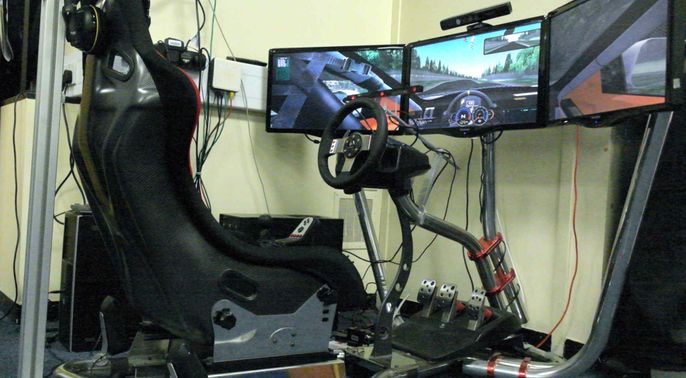
The Simulator
Our custom car simulator setup consists of Vision Racer seat with a force feedback steering wheel, pedals and three monitors to enhance the user’s immersion to the game. Two RGB-D cameras as well as an eye tracker are also installed to capture unobrtusive user’s physiological signals and the environment.
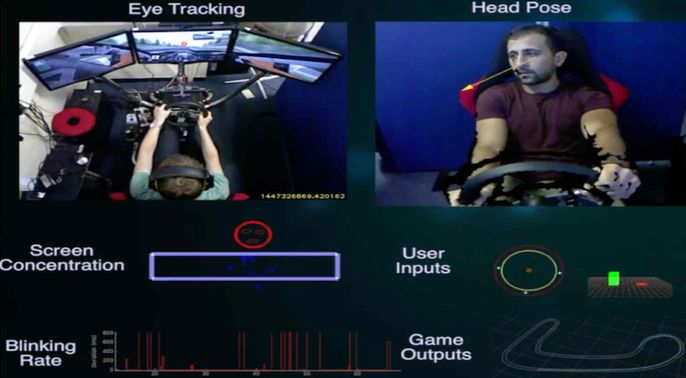
User Data Extraction
Using a remote eye tracker we capture unobrtusively the eye gaze, fixations and blinking rate of the user. Whereas the front facing kinect is calculating the head pose of the user. We also collect user's game data such as inputs, car locations, time, collisions, etc and embed these information into our user model.
Data Collection and Track Change
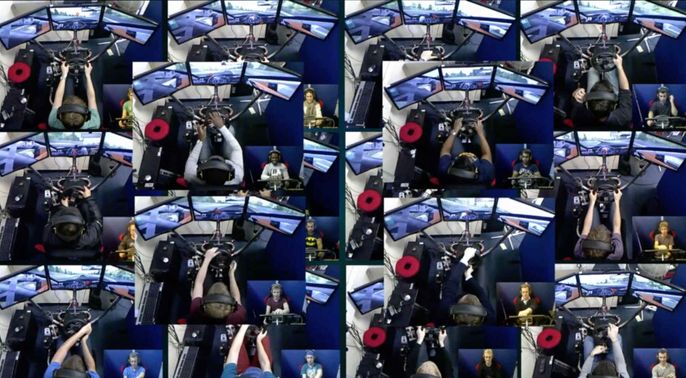
Collection of User Data
The design, evaluation and implementation of our models are validated via real-time user experiments. Both models and the simulator setup are continously improved from the user feedback obtained, to ensure that the data collected is reliable and models are adequate to explain the user's characteristics.
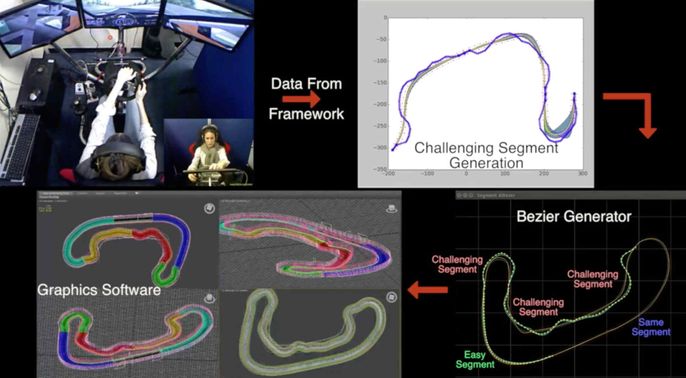
Personalised Track Generation
While the user is driving, the driver's model analyses the collected data and generates a personalised track that fits to the user's strengths and weaknesess. The new track ensures to keep the engagement of the trainee at high levels and also adjust the difficulty of the new track to fit the personalised training level of the particular user.
Key Publications:
- Georgiou, T., Demiris, Y. (2017), Adaptive user modelling in car racing games using behavioural and physiological data. User Modeling and User-Adapted Interaction (UMUAI), Pages 1-45.
- Georgiou T, Demiris Y, 2016, Personalised Track Design in Car Racing Games, IEEE International Conference on Computational Intelligence and Games (CIG)


